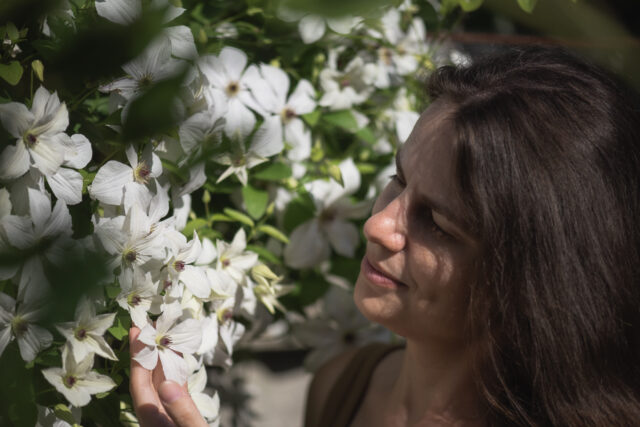I first learned about Grand Prismatic Seed when researching dye plants to add to our garden. I have always been fascinated by the art of natural dyeing and was on the hunt for suitable flower varieties that could be grown from seed.
Owners and farmers, James and Guy have put a tremendous amount of work into their website—it’s super informative, filled with great photos, and I love their seed descriptions. All of the seeds I have ordered from them (which is a lot!) have done exceptionally well–their quality is top-notch.
Grand Prismatic is located in the mountain foothills of Utah, so the varieties that they offer can withstand the stresses of growing in a desert climate. They focus on plants that thrive in harsh conditions, including hot dry summers and cold snowy winters. If you’re a gardener in this type of climate, they are a wonderful resource!
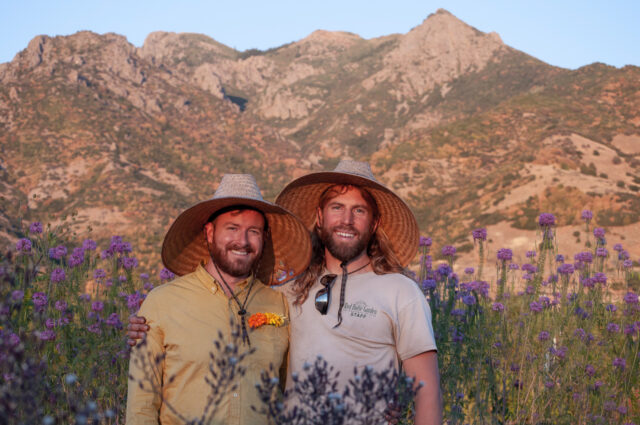 James and Guy, I’m so happy to be able to interview you both for the blog and for more people to find out about what you’re up to. You each bring a unique perspective to Grand Prismatic Seed. James, you previously worked with Frank Morton at Wild Garden Seed in Oregon, and Guy, you have such wide-ranging experience, including ethnobotany and habitat restoration. Can you share a little more about each of your backgrounds and how they’ve influenced your business?
James and Guy, I’m so happy to be able to interview you both for the blog and for more people to find out about what you’re up to. You each bring a unique perspective to Grand Prismatic Seed. James, you previously worked with Frank Morton at Wild Garden Seed in Oregon, and Guy, you have such wide-ranging experience, including ethnobotany and habitat restoration. Can you share a little more about each of your backgrounds and how they’ve influenced your business?
James: If you had asked me in my twenties what I would be doing in my thirties, I would never have predicted seed farming or owning a business! My background isn’t rooted in botany, horticulture, or agriculture. I studied Anthropology and International Studies in college. After graduation, I went on to work for the International Rescue Committee, first as a youth program coordinator, and later as a special needs case worker assisting refugee families being resettled in the Salt Lake Valley.
After Guy got a job that moved us from Salt Lake City to Corvallis, Oregon a string of serendipitous events landed me at Wild Garden Seed. It didn’t take long for Frank Morton’s extraordinary passion for seed farming and plant breeding to rub off on me. Within a few months on the job, I was hooked on the art and science of seed saving. My 5 years at Wild Garden Seed influenced Grand Prismatic in so many ways, from our method of precision winnowing to our brand loyalty toward the storage totes we buy.
Other factors of my background that have influenced Grand Prismatic are my love of fiber arts and dye plants (which we feature prominently in our catalog), and my capacity to enjoy extremely tedious tasks like hand-filling thousands of seed packets at a time, winnowing for days on end, and what can feel like endless weeding projects.
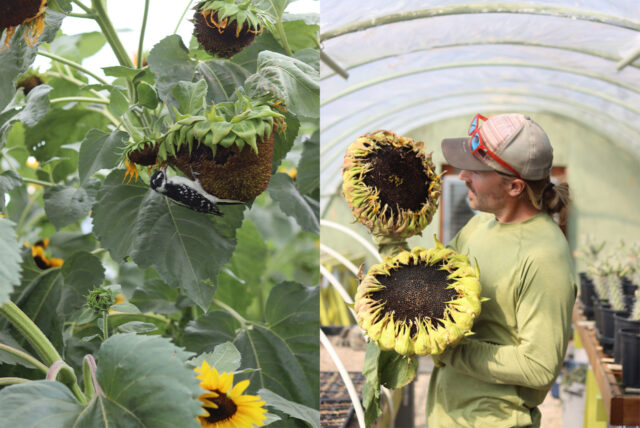 Guy: I have been involved in a variety of ethnobotanical projects through work, study, and my personal life, and experiencing communities with deep-rooted, thriving relationships with plants and ecosystems has been very impactful. This has inspired me to look more deeply at how I engage with plants and the received knowledge and perspectives gained from my own cultural upbringing and schooling.
Guy: I have been involved in a variety of ethnobotanical projects through work, study, and my personal life, and experiencing communities with deep-rooted, thriving relationships with plants and ecosystems has been very impactful. This has inspired me to look more deeply at how I engage with plants and the received knowledge and perspectives gained from my own cultural upbringing and schooling.
The deep relationship with place and the intimate knowledge of how to live with your surroundings are constant messages in ethnobotany. Our modern lifeways and global economy have obscured and abstracted that sense of immediate connection with nature in many of our daily lives.
Through Grand Prismatic Seed, I hope to introduce people to plants and ways to interact with them that provide meaningful connections to the natural world.
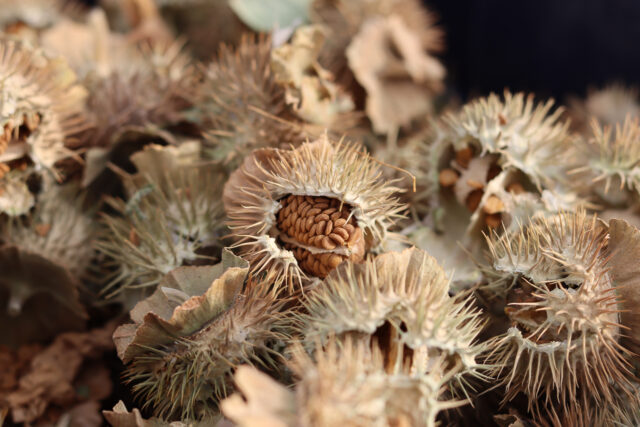 My work in field botany, habitat restoration, and native plant and seed production has developed my knowledge of plant ecology of various regions in the western U.S. That knowledge gives me insight into underutilized plant species. I also learned many skills, techniques, and perspectives that are transferable to seed farming and provide additional avenues for us to explore, such as seed production for ecological restoration efforts.
My work in field botany, habitat restoration, and native plant and seed production has developed my knowledge of plant ecology of various regions in the western U.S. That knowledge gives me insight into underutilized plant species. I also learned many skills, techniques, and perspectives that are transferable to seed farming and provide additional avenues for us to explore, such as seed production for ecological restoration efforts.
Similarly, my current work in water conservation gardening at Red Butte Garden and Arboretum has exposed me to a huge diversity of plants used in many styles of gardening, especially plants that support sustainable gardening practices.
I believe that through my time spent in each of these disciplines, I have developed a holistic viewpoint that gives Grand Prismatic Seed a multi-faceted nature and the ability to offer customers the opportunity to explore and develop their gardens in exciting ways.
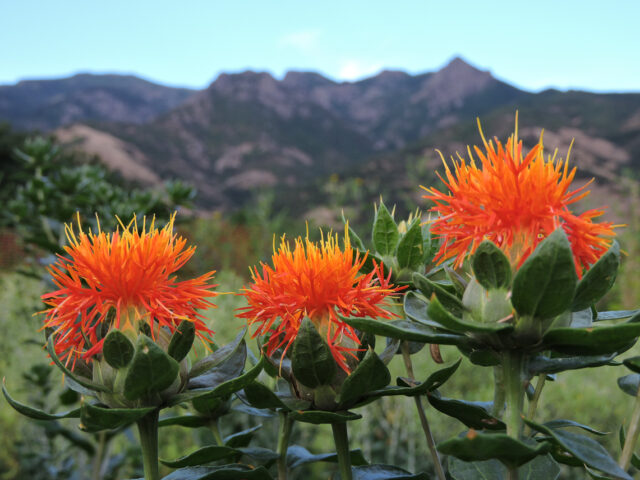 In the U.S., seed companies are often located on the west or east coast. What led you to start Grand Prismatic in Utah?
In the U.S., seed companies are often located on the west or east coast. What led you to start Grand Prismatic in Utah?
We were both raised in Utah and when we decided to take the leap and start our own seed farm, the idea of being close to family again felt really grounding and comforting. After 5 years of living and farming in Oregon, we also missed the landscapes and flora of Utah, and the idea of offering many of our favorite Utah native plants alongside domesticated crops in our seed catalog was really exciting for us both.
The opportunity to make plant selections in an environment that has fewer seed growers and plant breeders also appealed to us. As climate change continues to make growing conditions less predictable, having adaptable seeds selected under diverse environmental pressures will become increasingly important.
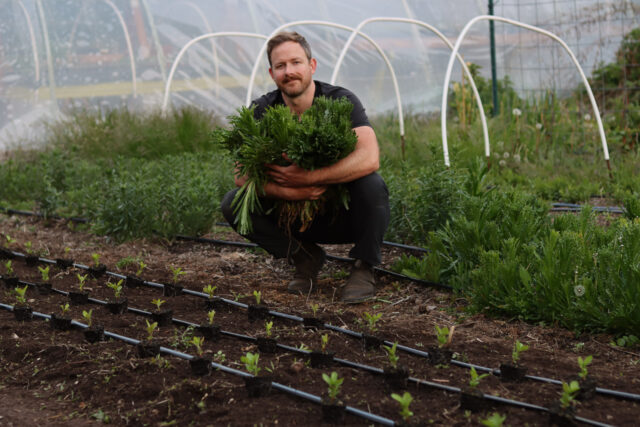 Compared to our mild climate here in the Pacific Northwest, the Intermountain West seems to experience more extreme temperatures and weather. How have those conditions impacted the varieties that you choose to grow, and has this changed over time?
Compared to our mild climate here in the Pacific Northwest, the Intermountain West seems to experience more extreme temperatures and weather. How have those conditions impacted the varieties that you choose to grow, and has this changed over time?
The Intermountain West is definitely a harsh environment for seed production. The silver lining is that our plants end up having LOTS of selection pressures like intense hail storms in the spring, early and late frosts, and large thunderstorms with strong winds fueled by monsoon moisture in late summer. Over time these selection events will produce increasingly resilient plant seeds.
Each season we grow a handful of varieties that we know are unlikely to produce seeds before frost, but we love pushing the envelope to see what we can and cannot grow here in the high desert. Sometimes it takes years of experimentation to get things to work just right, especially with how variable our growing season is year to year.
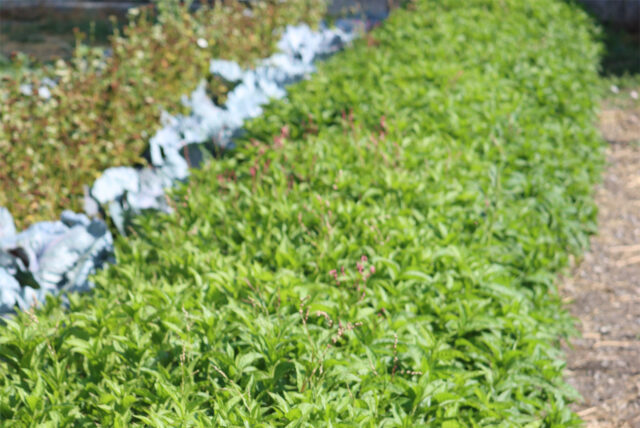
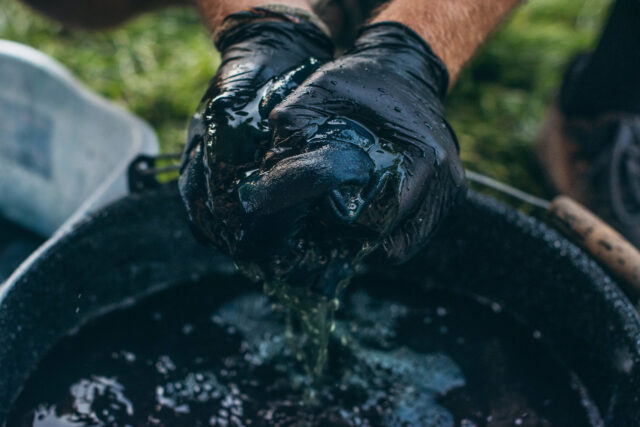 An example of this longer-term experimentation with varieties is our time spent with Japanese indigo (pictured above). The first 2 years that we planted it were pretty demoralizing, and we questioned whether or not it was a viable seed crop in our region. The plants grew beautifully here, but they weren’t able to produce seeds before frosty autumn weather set in.
An example of this longer-term experimentation with varieties is our time spent with Japanese indigo (pictured above). The first 2 years that we planted it were pretty demoralizing, and we questioned whether or not it was a viable seed crop in our region. The plants grew beautifully here, but they weren’t able to produce seeds before frosty autumn weather set in.
Instead of throwing in the towel, we saved seeds from the few individuals that bloomed a tad earlier and were slightly more frost hardy, and then we grew those seeds out with a mix of other Japanese indigo varieties with a similar leaf shape.
The result of this mixture of genetics and lots of natural selection via extreme Utah weather events has been a beautiful population of robust plants that are a very reliable dye and seed crop for us year after year.
I would say that our method for selecting varieties hasn’t changed too much over time, but the harsh conditions of our climate have definitely brought us more respect for the rugged native plants that we grow.
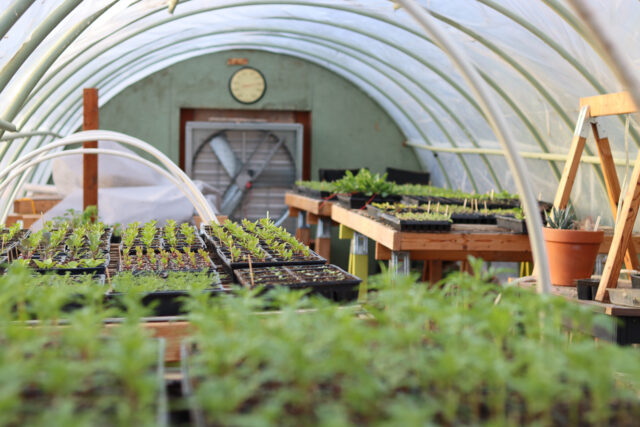 In the early years of Floret, I rented land from a neighbor and I was interested to read that you also lease some of your growing area. Can you tell us a little more about how you came to find your current location?
In the early years of Floret, I rented land from a neighbor and I was interested to read that you also lease some of your growing area. Can you tell us a little more about how you came to find your current location?
After losing our original leased land to the expansion of a nearby highway in 2019, we were having a difficult time finding more land to grow on. Luckily, Rikki Longino, who is now a dear friend, came across a post we had on Instagram regarding our land search and reached out to us about extra growing space that they had available at the Mobile Moon Co-op (MMC). We’ve now been growing crops at the MMC for four seasons and love working alongside them.
In addition to land leased at the MMC, we plant high-maintenance seed crops in the yard of the house we rent and have an ever-growing diversity of seed crops at Top Crops farm in downtown Salt Lake City. Having three different growing locations can be a lot to juggle, but this allows us to have multiple isolation plots for plants of the same species.
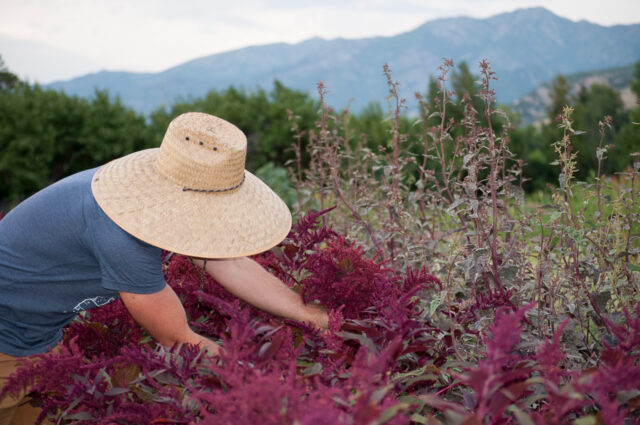 There are definitely constraints that come with leasing land, and in many cases, like our first lease, you may end up losing all the work you have invested, but the financial commitment of leasing property is far less burdensome than having large land debts.
There are definitely constraints that come with leasing land, and in many cases, like our first lease, you may end up losing all the work you have invested, but the financial commitment of leasing property is far less burdensome than having large land debts.
Most farmland being sold in our area is priced for future subdivisions and not agriculture, which has prevented us from being able to afford a permanent home for Grand Prismatic Seed. We love our current growing locations but look forward to the security that would come from a future forever farm. (If you are reading this, and happen to have any leads on a little house in Utah with land priced for agriculture, send us an e-mail!)
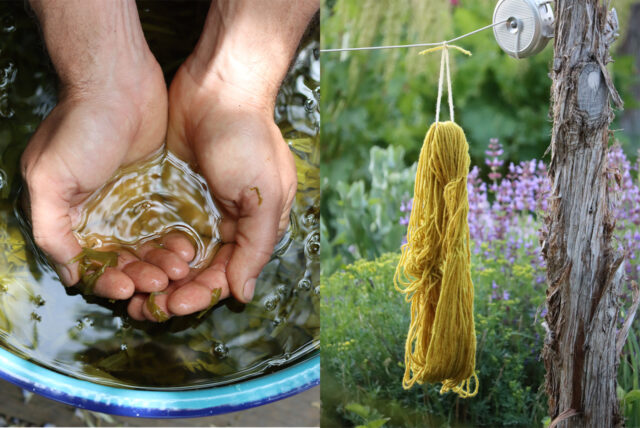
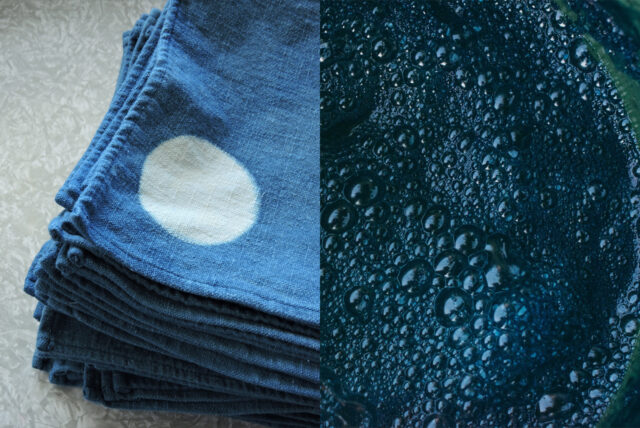 Your online shop features an extensive collection of varieties that can be used for natural dyeing. What drew you to this special group of plants, and how do you go about selecting the seeds that you offer?
Your online shop features an extensive collection of varieties that can be used for natural dyeing. What drew you to this special group of plants, and how do you go about selecting the seeds that you offer?
James: I became interested in dye plants as a teenager shortly after my sister and grandma taught me to knit. Knitting exposed me to a whole new world of fiber arts, and natural dyeing quickly caught my attention. After getting my first books on natural dyes, I became completely mesmerized by the process of coaxing color from plants. My fascination with this process has only grown as I’ve become a more experienced dyer.
When we started selecting the first dye plants we wanted to grow for our catalog, we were surprised by how difficult it was to source seeds, and even more surprised by the extremely low seed counts (and germination rates) of the varieties that were on the market.
An example would be Japanese indigo where many packets offered in the U.S. contain as few as 10 to 25 seeds per packet, and most of those seeds aren’t viable. (Japanese indigo seed doesn’t have a very long shelf life.)
Through a lot of research, tedious seed sourcing, plant trialing, dye experiments, and crop successes and failures, we’ve been able to curate a beautiful lineup of seeds for dye plants, and we add varieties to that list each season. We are also happy to be offering seed counts that give customers a greater chance of success with their dye gardens.
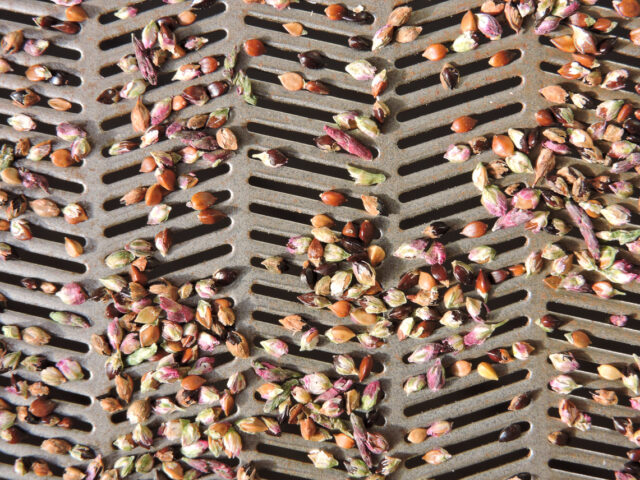 Many of the varieties you grow at Grand Prismatic are open-pollinated. Can you tell our readers a little more about what distinguishes open-pollinated plants from other varieties and why you’ve chosen to focus on them?
Many of the varieties you grow at Grand Prismatic are open-pollinated. Can you tell our readers a little more about what distinguishes open-pollinated plants from other varieties and why you’ve chosen to focus on them?
We believe a cornerstone of food sovereignty is the ability of farmers and gardeners to save their own seed and adapt varieties to meet the needs of their environment and community. Because of this core tenet, we grow open-pollinated varieties that will produce true-to-type seeds when saved by their new stewards.
Open-pollinated plants are allowed to naturally pollinate within their variety, while hybrids are created by controlling the pollination of two inbred lines to produce a new uniform variety with specific attributes. If you save seeds from hybrid parents, it’s unlikely that their progeny will have the traits you originally desired. Because of this, gardeners and farmers relying on hybrid varieties must return to the hybrid growers year after year to buy more seeds.
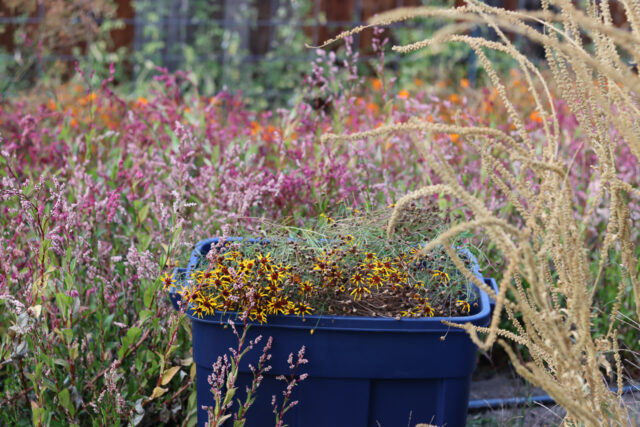 You talk a lot about the importance of farmers and gardeners being able to save their own seeds, which is something I’m passionate about as well. Do you have any advice or tips for those of our readers who haven’t tried their hand at seed saving yet?
You talk a lot about the importance of farmers and gardeners being able to save their own seeds, which is something I’m passionate about as well. Do you have any advice or tips for those of our readers who haven’t tried their hand at seed saving yet?
Definitely! We have two main tips:
First off, we recommend that readers interested in seed saving start by saving seeds from large-seeded domesticated crops like sunflowers, safflower, peas, and beans. Many generations of people across the world have spent thousands of years building relationships with these plants, and that’s resulted in traits that make their seed harvest and cultivation intuitive and straightforward.
Large-seeded domesticated crops no longer have intricate seed dispersal mechanisms that can make the seeds difficult to collect (like milkweed seeds floating away in the wind, or lupine pods exploding to propel seeds). Many of these plants have also lost their built-in dormancy, which allows them to germinate more quickly, easily, and uniformly when we plant them.
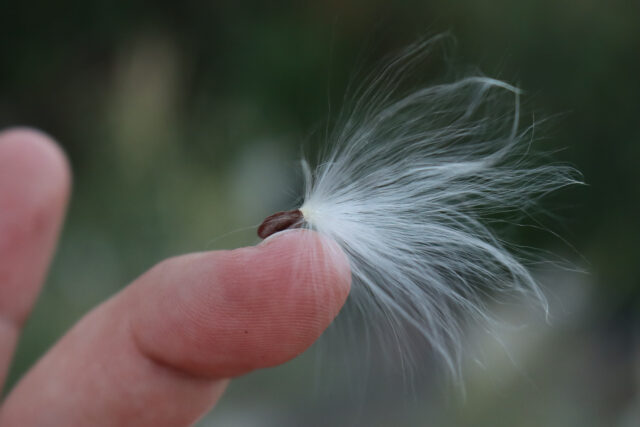 The seeds of many non-domesticated plants retain innate physical and chemical mechanisms that prevent the seeds from germinating all at once or without special environmental signals that are tied to survival in the plant’s natural surroundings. These signals are often connected to patterns of temperature, moisture, decomposition, wildfire, or other phenomena of the natural world that the plants have evolved with and adapted to. Because of this, undomesticated crops can be quite frustrating for beginning gardeners or seed savers.
The seeds of many non-domesticated plants retain innate physical and chemical mechanisms that prevent the seeds from germinating all at once or without special environmental signals that are tied to survival in the plant’s natural surroundings. These signals are often connected to patterns of temperature, moisture, decomposition, wildfire, or other phenomena of the natural world that the plants have evolved with and adapted to. Because of this, undomesticated crops can be quite frustrating for beginning gardeners or seed savers.
Domesticated plants with large seeds are also much easier to clean without professional tools. A box fan or heavy breeze can easily remove much of the chaff, and when the seeds are clean of debris, the large size makes them easy to inspect for maturity and health.
By saving seeds from large-seeded domesticated plants, you get to benefit from the brilliance of our ancestors’ work who have made the job so much easier, while also joining a chain of seed savers that will connect you to the next generation of growers.
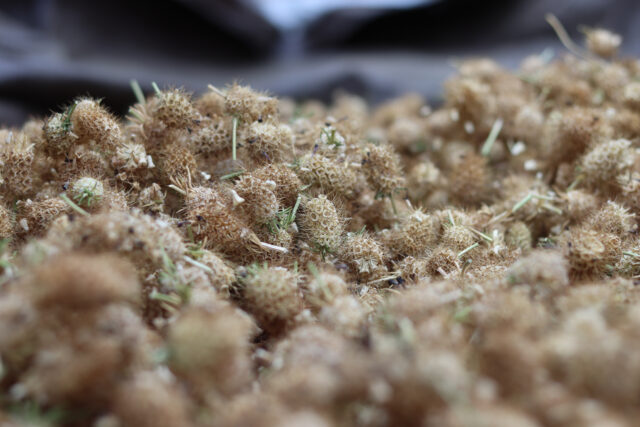 Our second recommendation is to focus on plants that are self-fertile, meaning that their own flowers can pollinate themselves. With self-fertile plants, you are more likely to end up saving seed for a plant that will produce the vegetables, flowers, etc. that you expect. With outcrossing plants, you’ll need to be much more aware of nearby plants of the same species that may cross with your crop.
Our second recommendation is to focus on plants that are self-fertile, meaning that their own flowers can pollinate themselves. With self-fertile plants, you are more likely to end up saving seed for a plant that will produce the vegetables, flowers, etc. that you expect. With outcrossing plants, you’ll need to be much more aware of nearby plants of the same species that may cross with your crop.
Winter or summer squash are examples of commonly grown plants that can take special care to maintain the characteristics desired by the seed saver. This is due to the fact that one of their main pollinators is a very widespread native bee species that can cover significant distances while pollinating almost exclusively squash plants. What can result is a seed carrying very different genetics than what you are expecting.
As you get more familiar with seed saving and seed cleaning, smaller seeded crops and native plants will quickly become more approachable!
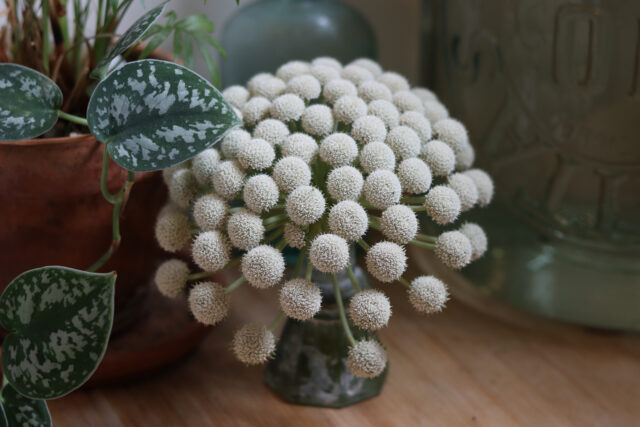 I’m impressed by the number of unique and hard-to-find varieties that are included in your catalog. What criteria do you use when selecting the seeds that you offer each year?
I’m impressed by the number of unique and hard-to-find varieties that are included in your catalog. What criteria do you use when selecting the seeds that you offer each year?
Thank you! We hope to inspire people to explore plants by catering to a wide diversity of gardening interests and goals, including food, medicine, dye, natives, habitat enrichment, soil building, and beauty. Some selections come down to personal preference for flavor, aesthetics, and other traits.
We generally try not to use our limited growing spaces for plants that can be sourced easily from large producers unless it is something we have worked to adapt to our local growing conditions, and we always aim to identify plants that we can grow well and that will produce healthy seed crops.
Many heirloom varieties have fallen out of cultivation or have gone extinct. When we identify an heirloom variety that we want to steward, we like to get those seeds out to people and practice conservation through dissemination.
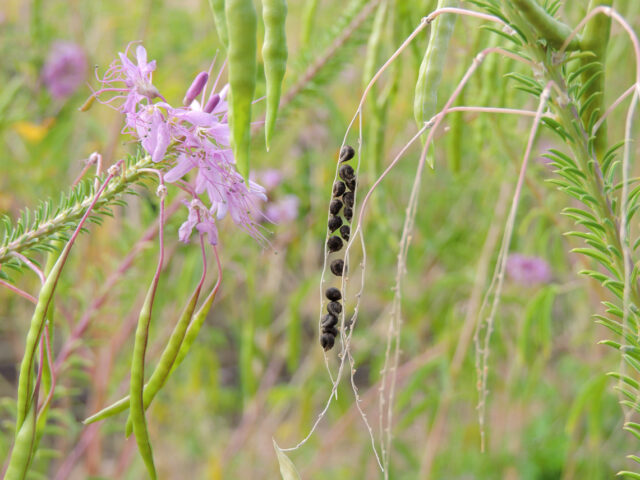 Another goal for our selections is to highlight less commonly known and grown native flora from different regions. We want to provide plants that offer something special to gardeners, whether it is a chance to enhance/support the local ecology by including local wildflowers in their growing space, propagate uncommon wild food and medicine plants, or to incorporate tough, adaptable plants in their garden that create beauty while using fewer resources.
Another goal for our selections is to highlight less commonly known and grown native flora from different regions. We want to provide plants that offer something special to gardeners, whether it is a chance to enhance/support the local ecology by including local wildflowers in their growing space, propagate uncommon wild food and medicine plants, or to incorporate tough, adaptable plants in their garden that create beauty while using fewer resources.
Lastly but importantly, we strive to avoid plants that are known to become invasive and do damage to ecosystems in different areas. If we grow a plant with this kind of potential, we do our best to warn people of the risk and always encourage customers to consult their local state noxious weed lists before ordering seeds.
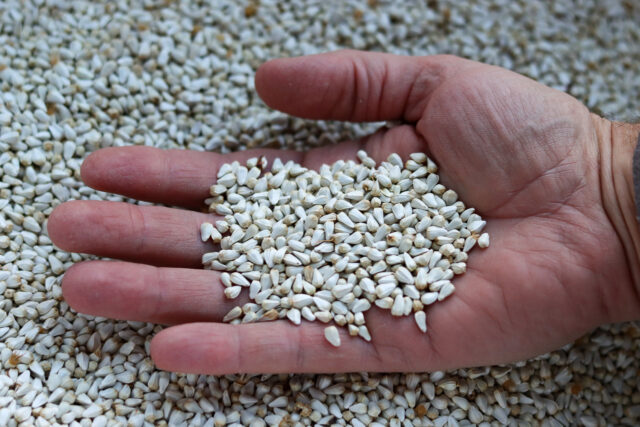 Last year you offered a few varieties that were part of the Open Source Seed Initiative (OSSI). Can you tell us a little more about OSSI and its benefits?
Last year you offered a few varieties that were part of the Open Source Seed Initiative (OSSI). Can you tell us a little more about OSSI and its benefits?
OSSI was developed to provide plant breeders with a way to identify their varieties as “open source” and protect them from future patents. The goal of this is to expand and maintain access to germplasm at a time when farmers worldwide are increasingly dependent on patented seeds that they can’t legally save or share.
After a plant breeder has submitted a variety to OSSI, seeds of that variety are then sold with the following pledge on each packet:
OSSI PLEDGE: You have the freedom to use these OSSI-Pledged seeds in any way you choose. In return, you pledge not to restrict others’ use of these seeds or their derivatives by patents or other means, and to include this Pledge with any transfer of these seeds or their derivatives.
OSSI also lays out four seed freedoms, which helps to summarize their stance on what an “open source” seed is:
- The freedom to save or grow seed for replanting or for any other purpose.
- The freedom to share, trade, or sell seed to others.
- The freedom to trial and study seed and to share or publish information about it.
- The freedom to select or adapt the seed, make crosses with it, or use it to breed new lines and varieties.
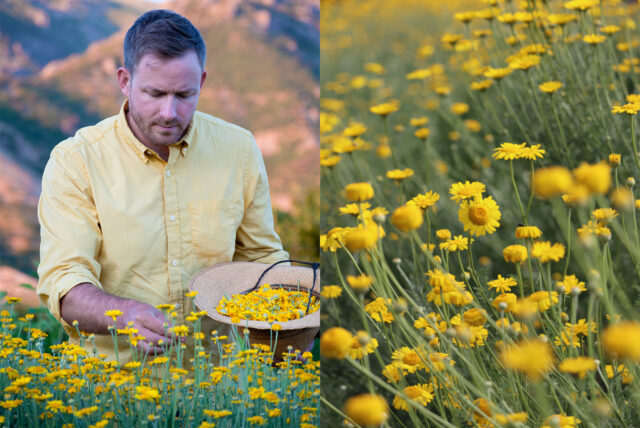 What are you most excited about for the upcoming growing season, and what is the best way for people to stay up to date with your current offerings?
What are you most excited about for the upcoming growing season, and what is the best way for people to stay up to date with your current offerings?
We are excited about all the new varieties coming to our 2024 catalog, but two that we’re most enthusiastic about are ‘Prairie Sun’ Rudbeckia which is a stunning cut flower and dye plant, and a bicolor Coreopsis that will be the fourth variety of dyer’s Coreopsis that we have available. We’ll also have fresh Japanese indigo back in stock!
One of the things that surprises us and delights us most each season is seeing customer photos on Instagram or sent to our email that show their happy plants or incredible dye projects featuring plants grown from Grand Prismatic Seed. People are SO creative!
We are also pretty excited about a handful of educational blog posts that we have in the pipeline for 2024.
The best way to stay up to date with our offerings is to sign up for our newsletter.
Thank you both so much for taking the time to tell Floret readers about Grand Prismatic. I’m really excited to grow more of your offerings this year.
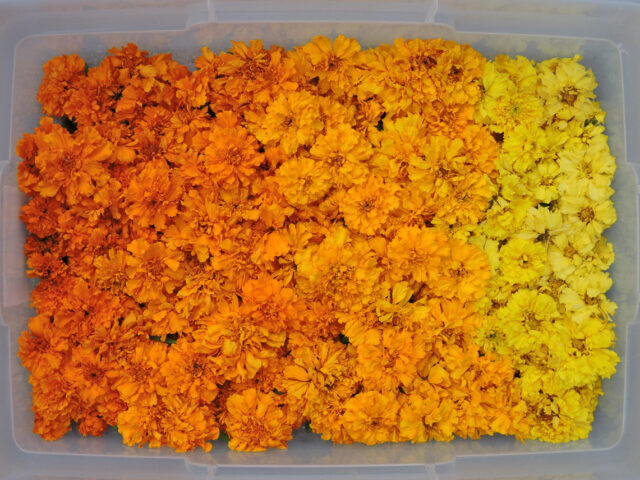 Grand Prismatic is offering a generous giveaway of five $100 gift cards to their online shop. For a chance to win, simply post a comment below telling us about your favorite dye plant, or one that you’re interested in trying. Winners will be announced on January 16. Please note: This giveaway is open to U.S. and Canadian residents only.
Grand Prismatic is offering a generous giveaway of five $100 gift cards to their online shop. For a chance to win, simply post a comment below telling us about your favorite dye plant, or one that you’re interested in trying. Winners will be announced on January 16. Please note: This giveaway is open to U.S. and Canadian residents only.
Update: A huge congratulations to our winners Rebecca, Alina, Alex, Sarah Aumsbaugh and Julianna.
To learn more and connect with Grand Prismatic Seed, be sure to visit their website and follow them on Instagram.
Please note: If your comment doesn’t show up right away, sit tight; we have a spam filter that requires us to approve comments before they are published.
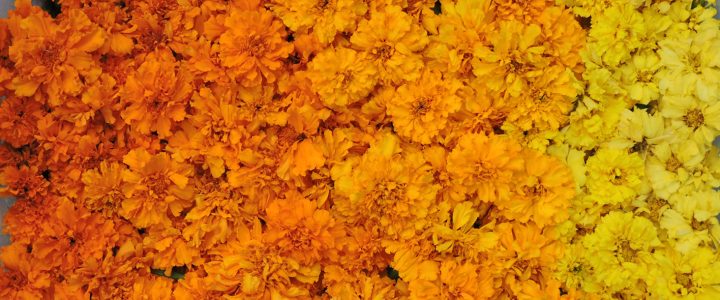
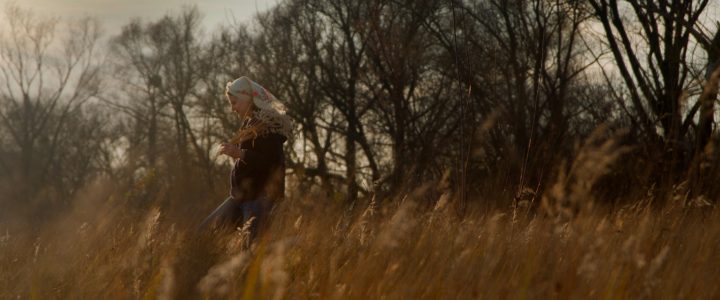
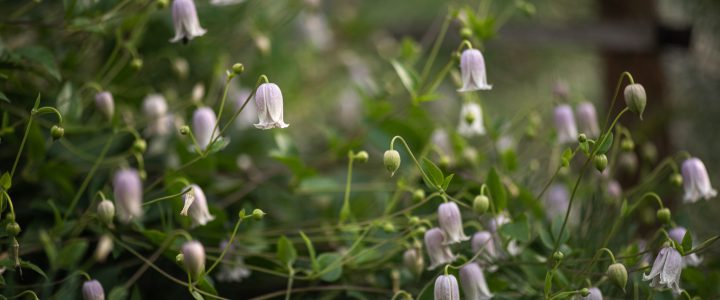
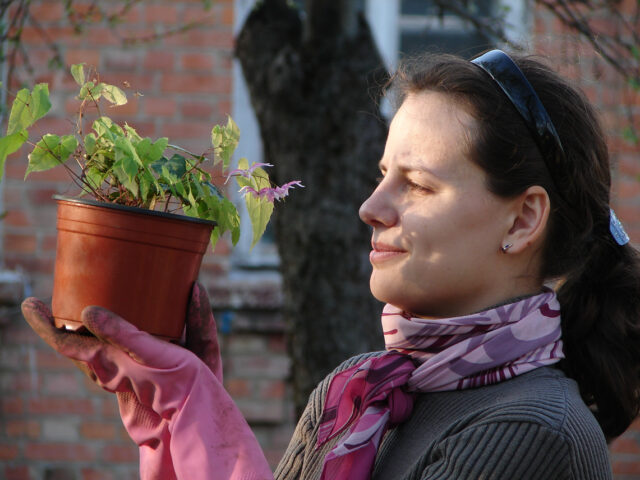
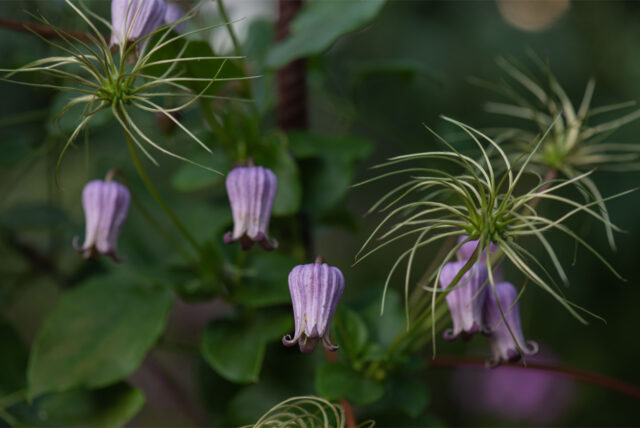
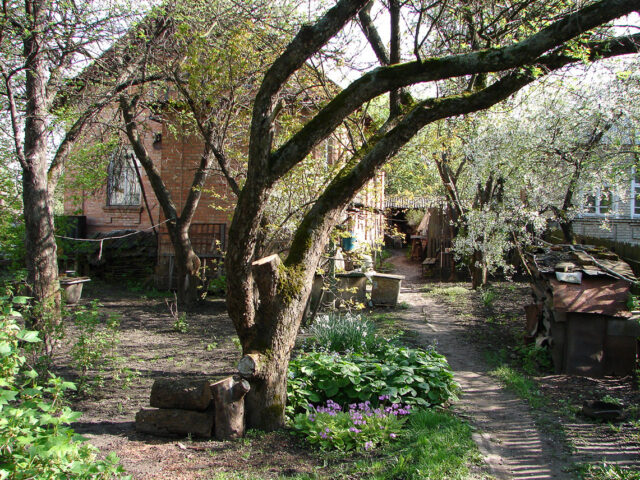
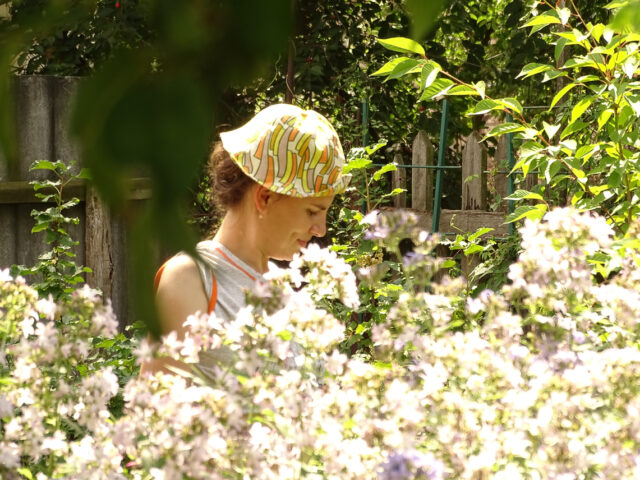 Alla, thank you so much for taking the time to share more about your flower journey. You live in Kharkiv in the Eastern part of Ukraine, and your garden is located in the heart of the city. Can you tell us what it’s like? What kind of plants do you grow?
Alla, thank you so much for taking the time to share more about your flower journey. You live in Kharkiv in the Eastern part of Ukraine, and your garden is located in the heart of the city. Can you tell us what it’s like? What kind of plants do you grow? 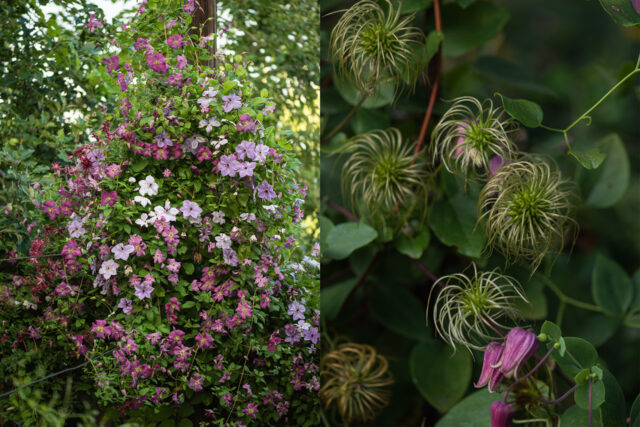 You have so m
You have so m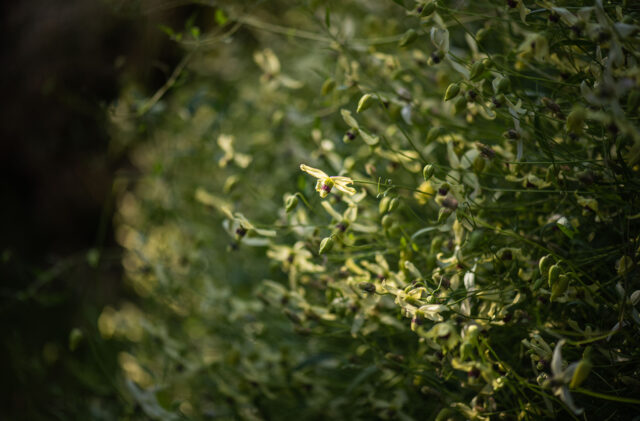
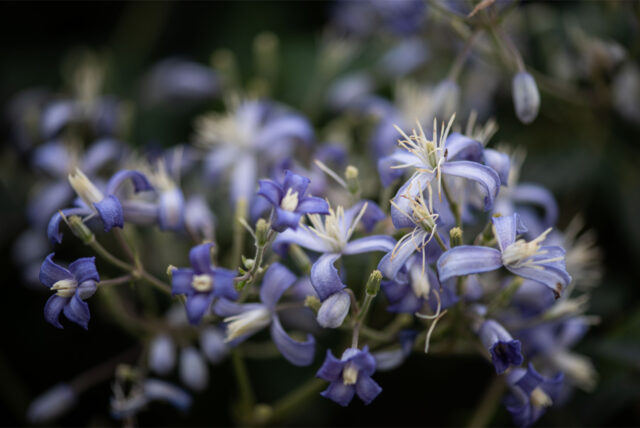 There are nearly 400 unique species of clematis but as I understand from your book, they fall into three main groups. Can you talk a bit more about the different groups, their bloom time, and their pruning needs?
There are nearly 400 unique species of clematis but as I understand from your book, they fall into three main groups. Can you talk a bit more about the different groups, their bloom time, and their pruning needs? 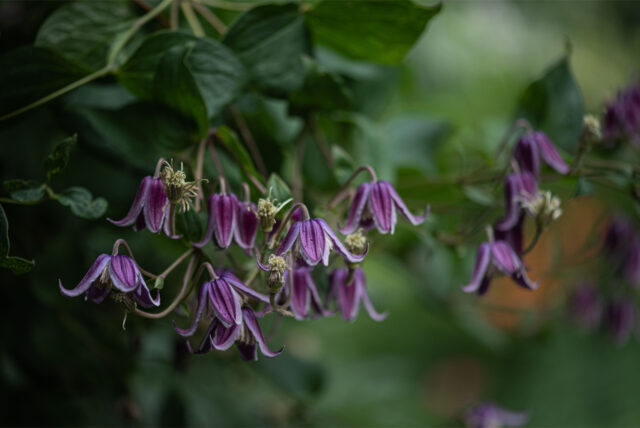 If people are interested in growing clematis, what do they need to know? Are there any varieties that you’d recommend for beginners?
If people are interested in growing clematis, what do they need to know? Are there any varieties that you’d recommend for beginners? 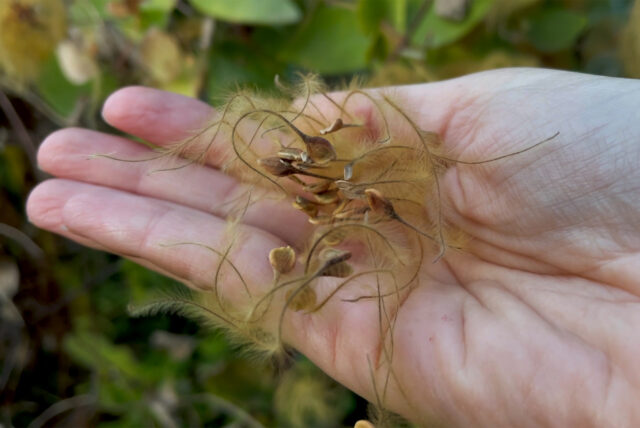 Until very recently, I was unaware that so many clematis varieties could be started from seed. Can you share more about this process?
Until very recently, I was unaware that so many clematis varieties could be started from seed. Can you share more about this process? 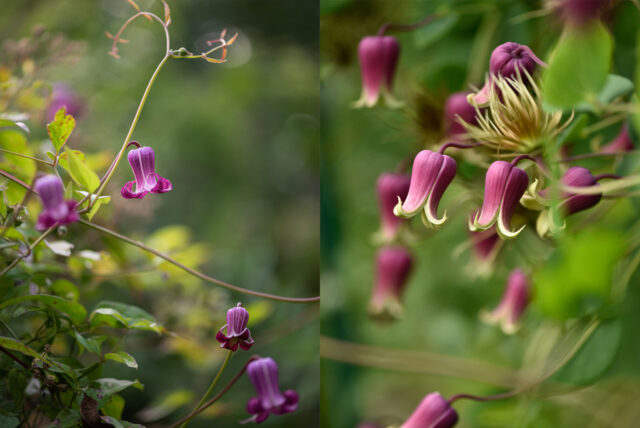
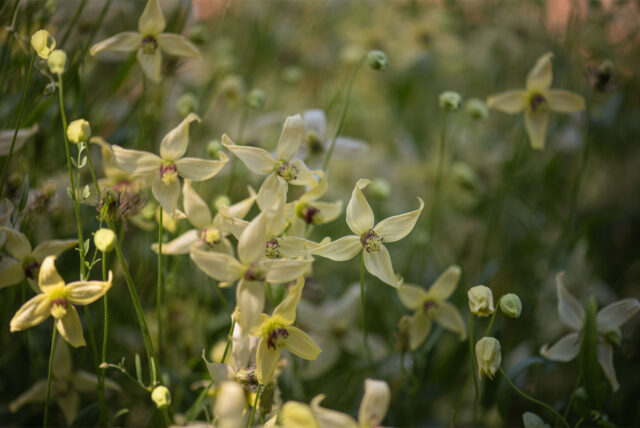 You have a huge offering of seeds that you grow and also sell. How many varieties of clematis do you currently have in your garden, and can you share some favorites?
You have a huge offering of seeds that you grow and also sell. How many varieties of clematis do you currently have in your garden, and can you share some favorites? 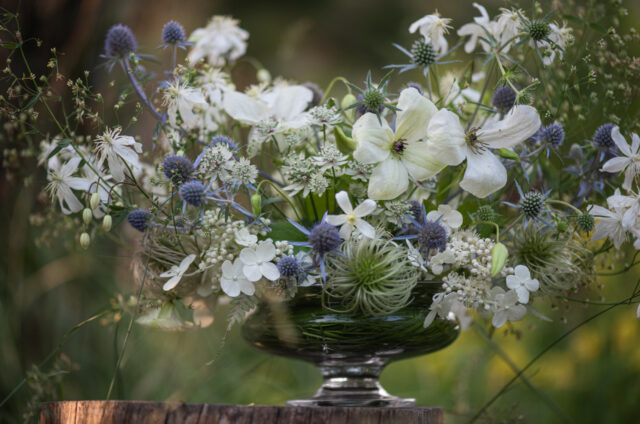
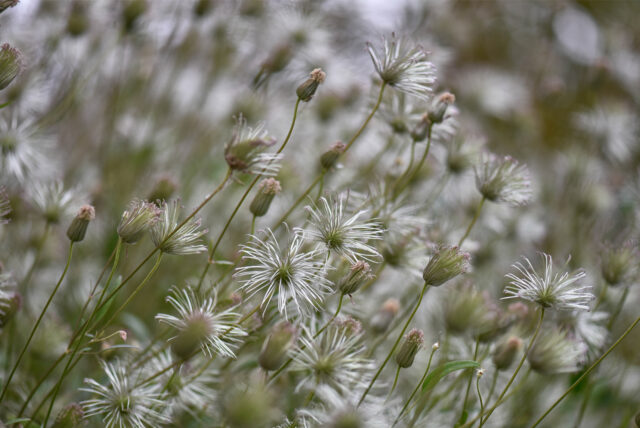 I love incorporating clematis vines into arrangements, especially larger statement pieces. What are your favorite varieties for arranging with? Do you have any tricks for maximizing vase life?
I love incorporating clematis vines into arrangements, especially larger statement pieces. What are your favorite varieties for arranging with? Do you have any tricks for maximizing vase life? 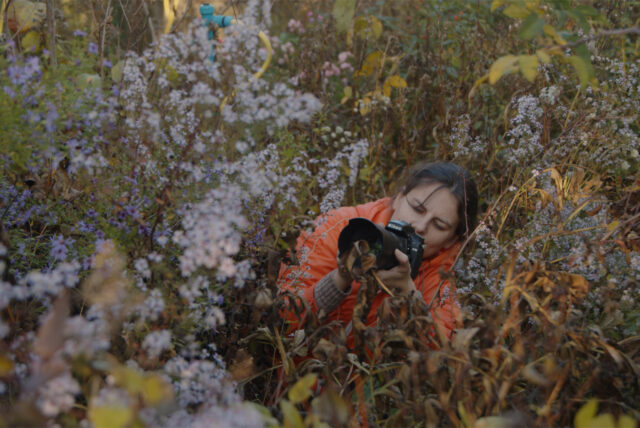
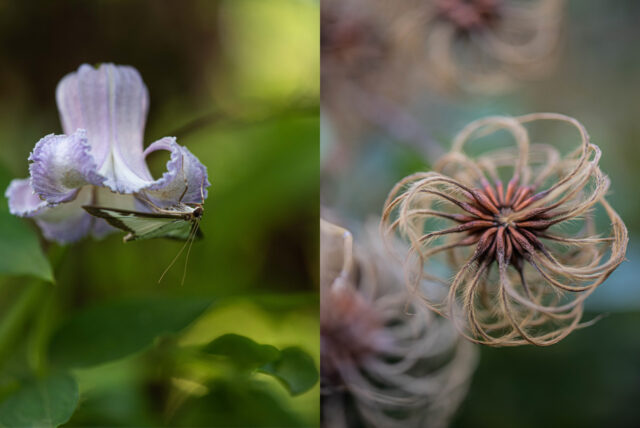 You are such a talented photographer and clearly have a passion for this work. How did you get your start?
You are such a talented photographer and clearly have a passion for this work. How did you get your start?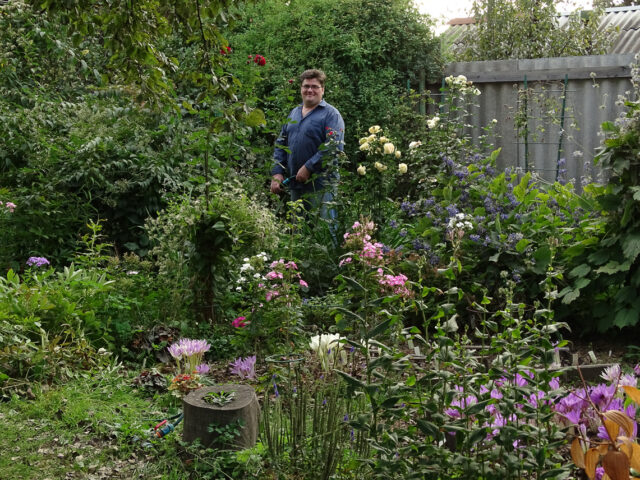 Because of this, my husband
Because of this, my husband 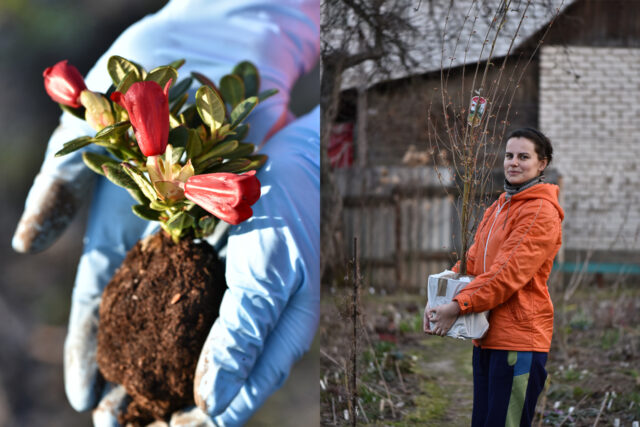 Ukraine is a very young country when it comes to gardening and has only recently been influenced by the Western world. What do you see for the future of Ukrainian gardens?
Ukraine is a very young country when it comes to gardening and has only recently been influenced by the Western world. What do you see for the future of Ukrainian gardens? 